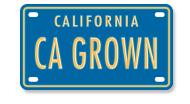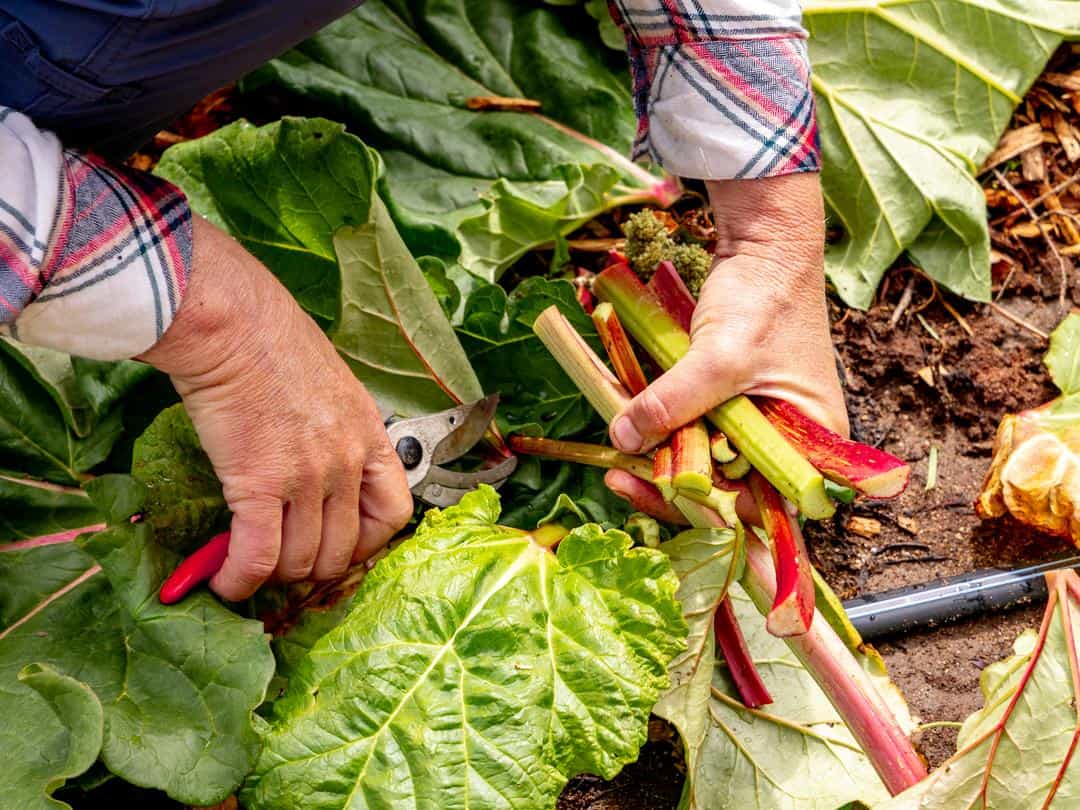Is Rhubarb Poisonous and Everything Else You Need To Know
Is rhubarb poisonous? Is it a fruit? How do you use it? Here’s everything you need to know.
What is rhubarb?
Pop quiz: is rhubarb a fruit or a vegetable? Many people assume that rhubarb is a fruit, mainly because it’s typically paired with sweet fruits like berries, peaches or pears. Adding to the confusion, a 1947 ruling on imported produce stated that since rhubarb is usually prepared as a fruit, it is (for legal intents and purposes) a fruit. This ruling might have been influenced by the fact that fruits were subject to lower tariffs than vegetables, but that’s a story for another day.
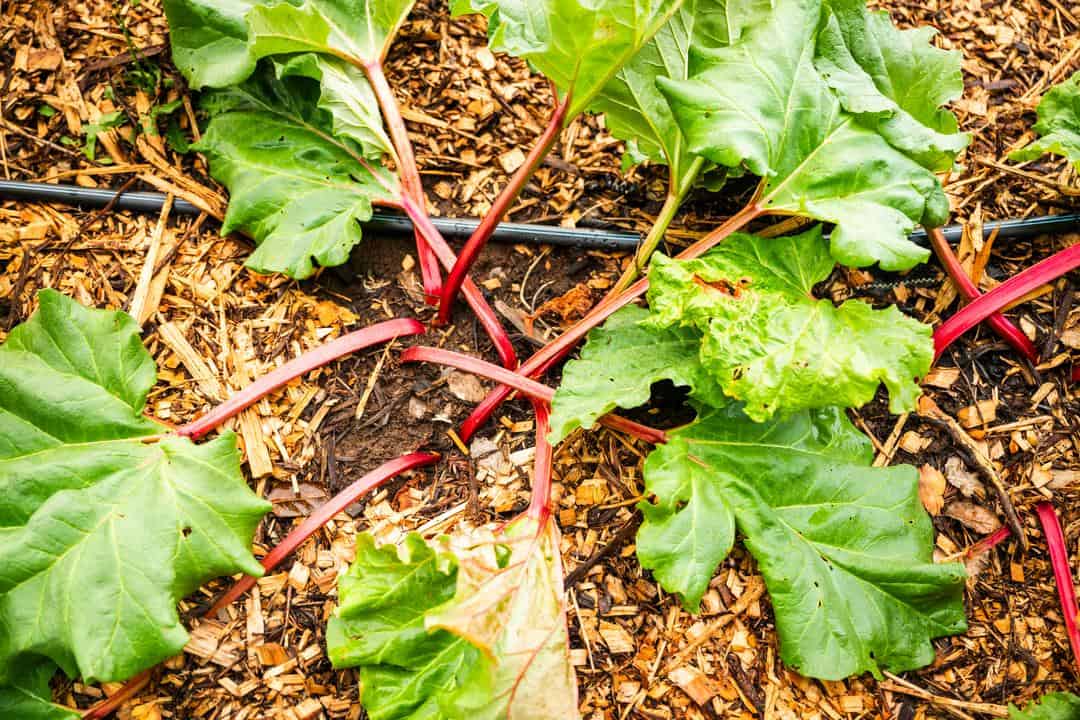
Scientifically speaking, rhubarb is a vegetable. Fruits come from the flowering part of the plant and contain seeds, whereas vegetables are the edible parts of a plant – the leaves, stem or roots. The rhubarb that we eat is the stem of the rhubarb plant.
Is Rhubarb Poisonous?
There is a somewhat common misperception that rhubarb is poisonous. While rhubarb stems are healthy and delicious, DON’T EAT THE LEAVES! The leaves of the rhubarb plant are toxic to humans and animals. While some folks argue that you’d have to consume quite a few leaves to feel the effects, we recommend steering clear entirely. Better safe than sorry!
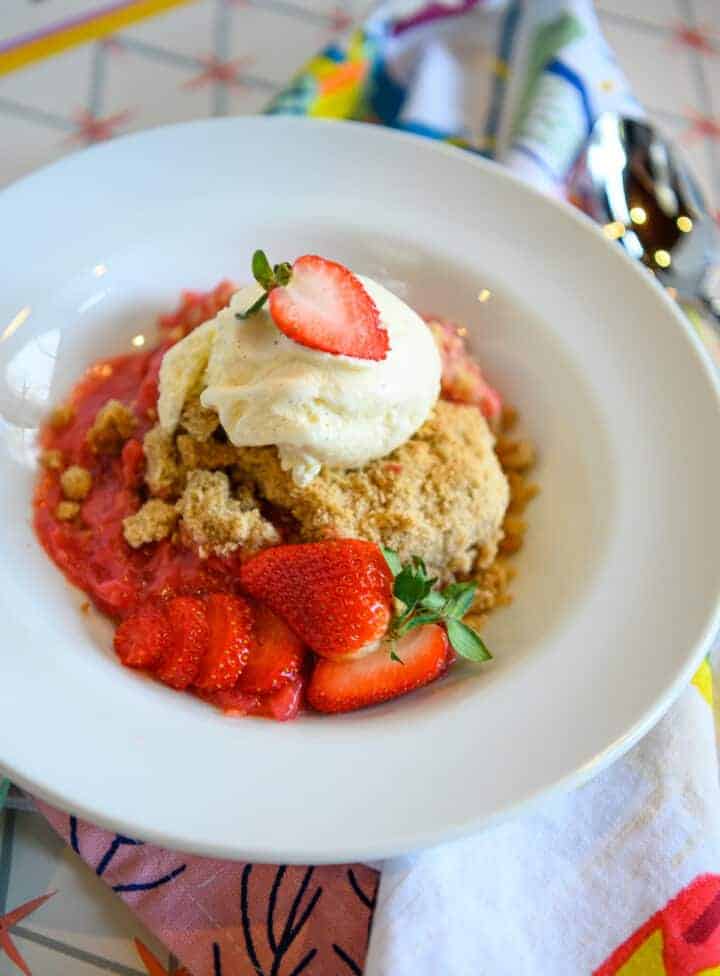
What does rhubarb taste like?
People typically describe the flavor of rhubarb as tart or sour. Some say it is comparable to a green apple with a hint of celery. This tart flavor blends beautifully with sweet fruits like berries (strawberries and rhubarb are BFFs, in case you didn’t know).
Health Benefits of Rhubarb
Rhubarb stalks are an amazing source of antioxidants, fiber, Vitamin K and more! Rhubarb may reduce inflammation and can help to improve both gut-health and bone health.
Remember – stick to the stalks and don’t eat the leaves! Rhubarb leaves are poisonous and high in oxalates. Ingesting rhubarb leaves can cause stomach discomfort, breathing issues, and a whole litany of unpleasant issues!
Where does rhubarb grow?
In the U.S., rhubarb grows predominantly in California, Washington, and Michigan. It can be found in farmers markets from March through July, depending upon weather and other growing conditions. In nationwide grocers, Rhubarb is usually more widely available in April and May.
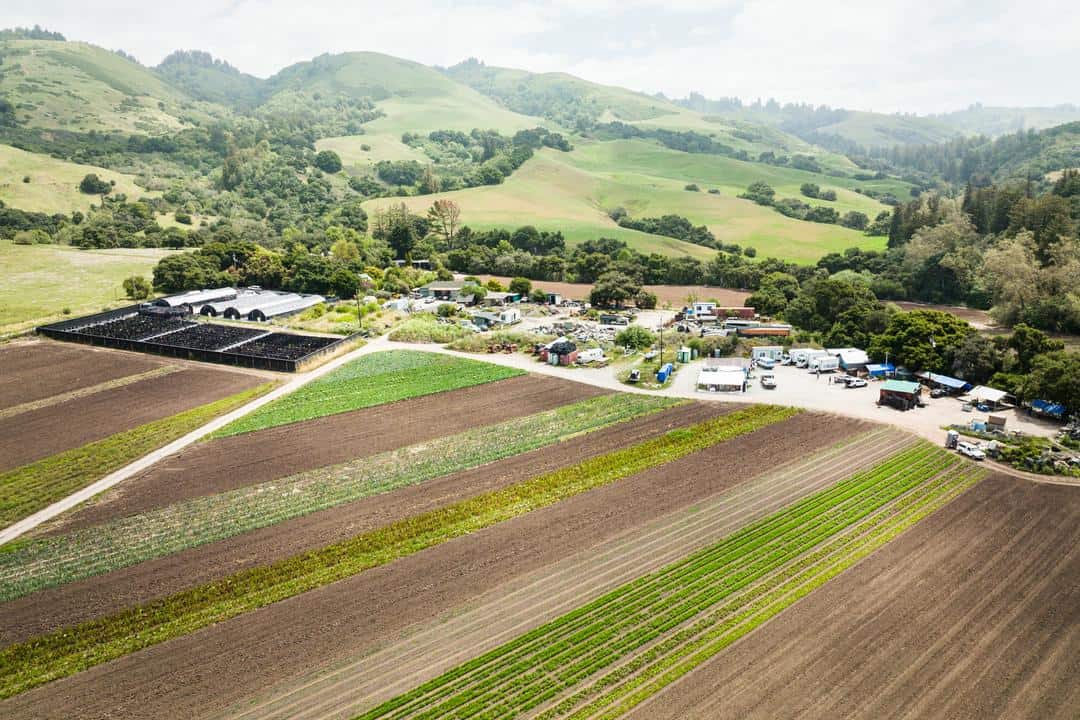
As far as vegetables go, rhubarb is a bit of a diva. It requires cold temperatures (about 40 degrees) to stimulate growth, wilts when temperatures near the 90s, and requires a good amount of water. In California, most commercial production occurs either along the coast or in the Sierra Nevada foothills but home gardeners can grow rhubarb as an annual in most parts of the state.
Fun fact: In the UK’s famous Rhubarb Triangle growers “force” rhubarb. After the first frost, growers move the plants to a dark, heated shed where they withhold all light from the plant. This sends the rhubarb plants into the veggie version of “fight or flight” mode. The plant throws all of its energy into finding light (admittedly, a futile effort – but the rhubarb doesn’t know that) and grows at an incredibly rapid rate. Forced rhubarb can grow up to an inch a day! These growers claim that this process yields sweeter, more tender stalks.
A few growers in California force rhubarb too, but most of our crop is grown in the open air.
If you think that sounds weird, wait until you hear how growers harvest forced rhubarb! Growers in the Rhubarb Triangle harvest their crop in the dark by candlelight. Anything more than minimal light will disrupt the plant’s growing cycle.
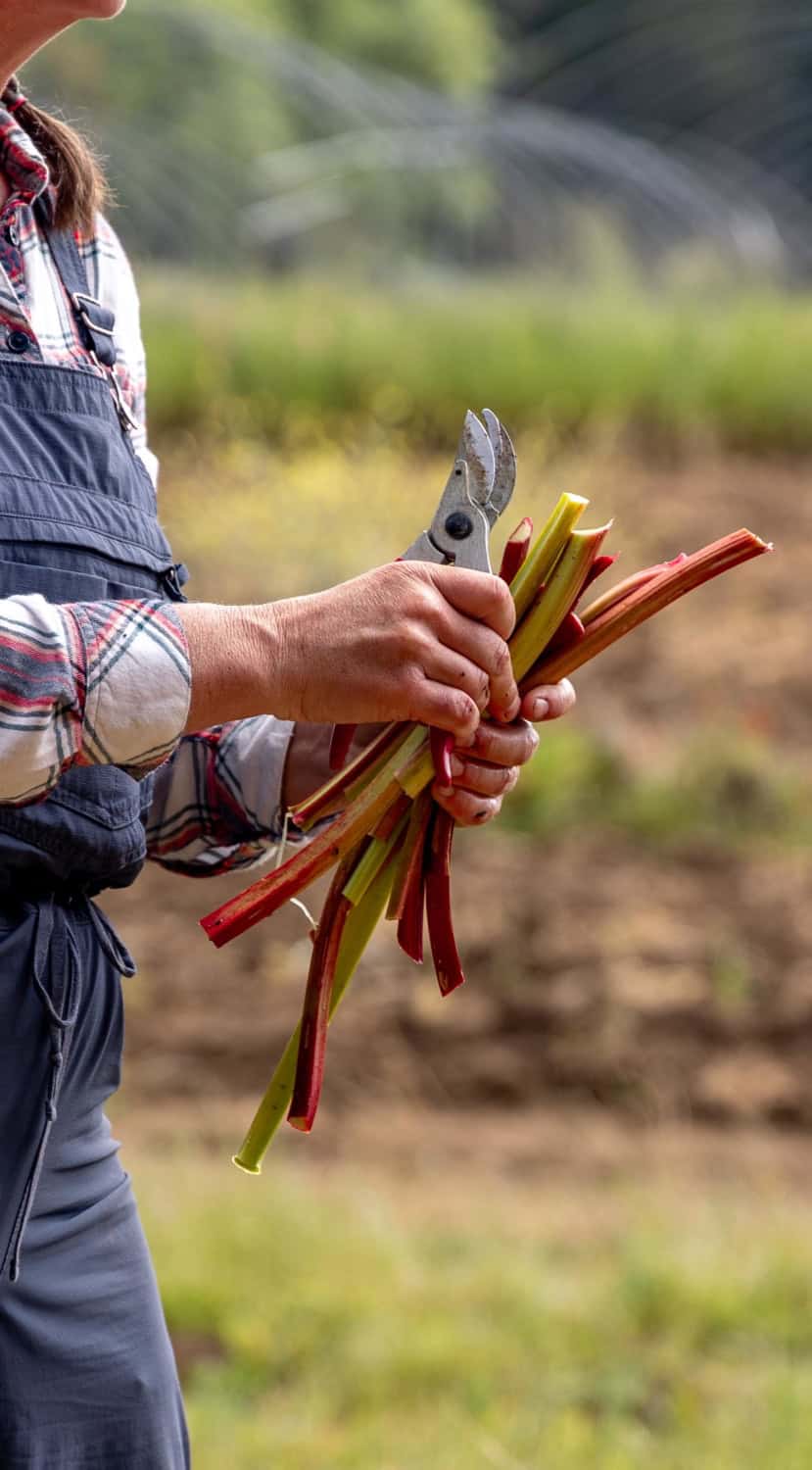

How is rhubarb grown?
Rhubarb is a perennial, meaning it “comes back” every year. Rhubarb can be grown from a crown, a rhizome or a seed. Starting from seed is a time commitment. Growers must wait about three years until they can harvest a plentiful crop. Their patience ultimately pays off, as rhubarb multiplies quickly and growers can divide the rhizomes every few years to increase their crop.
What are the challenges of growing rhubarb?
In most parts of California, the biggest hurdle rhubarb growers face is weather and water. As mentioned earlier, rhubarb thrives in cold temperatures and prefers cooler summers. Growers also need to keep a careful eye on water and drainage. Rhubarb likes it cold and wet, but with too much water, it tends to wilt and rot – like we said, kind of a diva.
On a brighter note, rhubarb is relatively pest and disease-resistant. Remember how we mentioned that the leaves are poisonous? Those same toxins ward off pests.
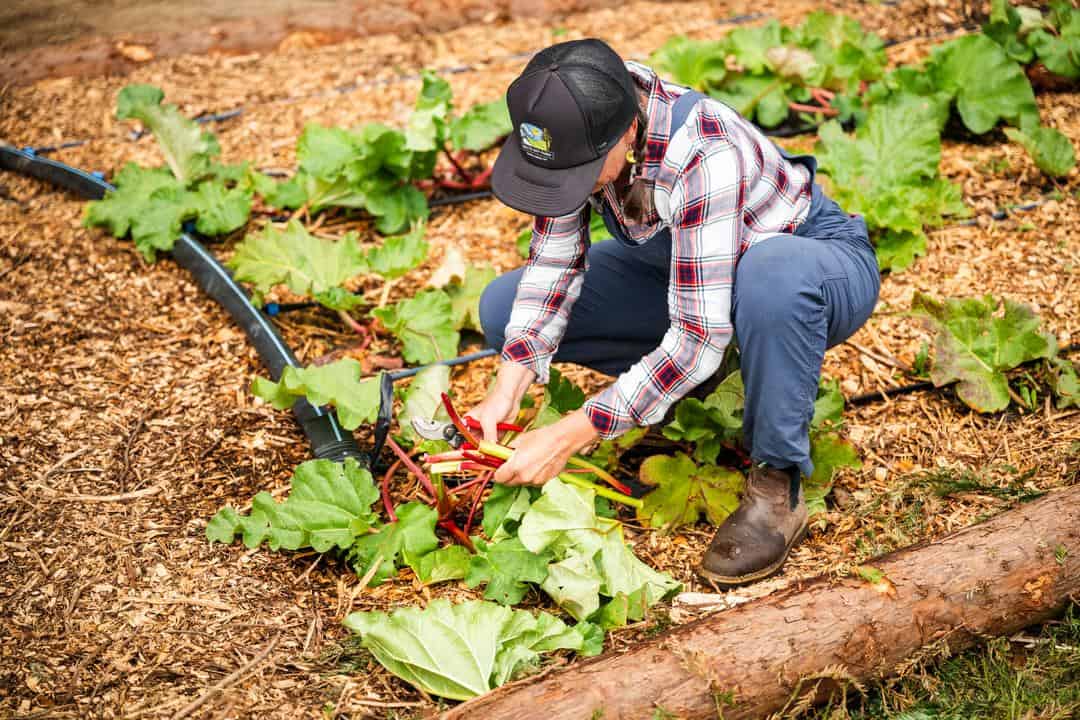
When is rhubarb harvest in California?
In California, growers harvest rhubarb in the spring. Timing varies depending on temperatures, but at Sea to Sky Farms, harvest begins in May. Color isn’t necessarily the best indicator of whether rhubarb is ready to harvest. This is because different varieties come in multiple hues – including green. The best way to tell whether rhubarb is ready to harvest is the height. When the stalk is 7-15 inches, it’s ready to harvest.
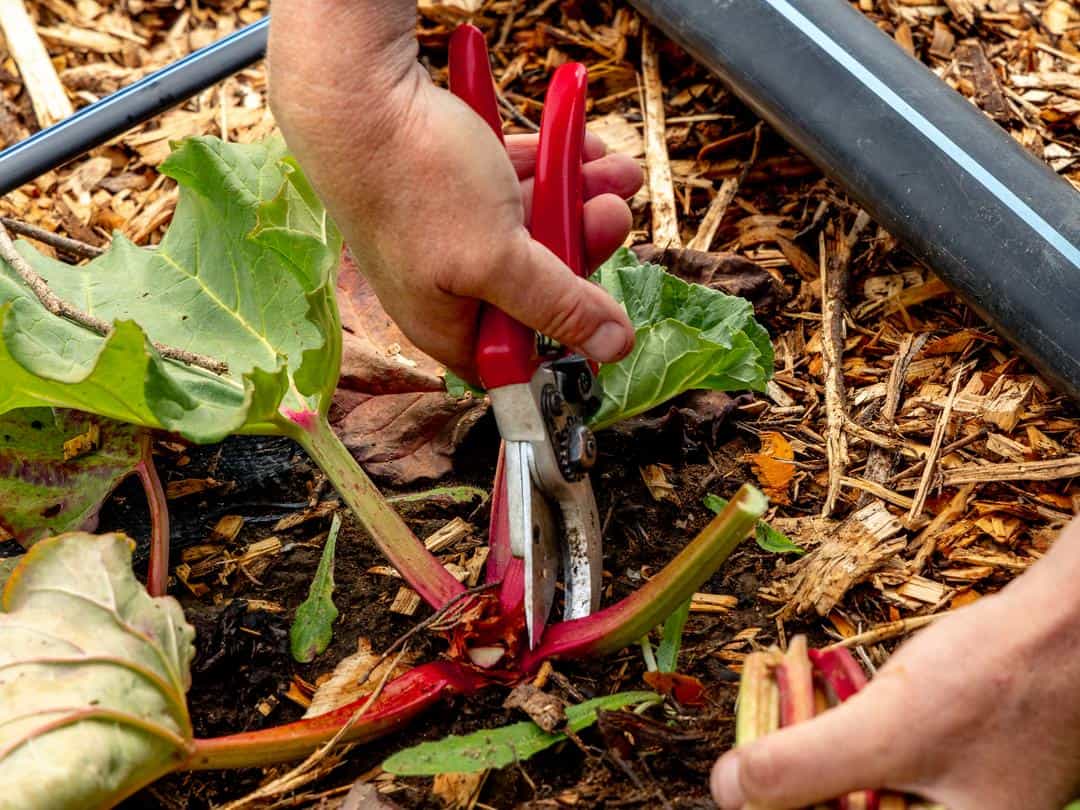
How is rhubarb harvested?
Rhubarb is hand-harvested. The stalks can be twisted off the plant or snipped with clippers. Since rhubarb likes to stay cool, it should be moved immediately to cold storage.
Meet a rhubarb grower!
We visited Sea to Sky Farm to learn about their amazing fruits, veggies and flowers! Farmer Chris even explained how rhubarb grows AND let a few of our CA GROWN creators try their hand at harvesting a few stalks!
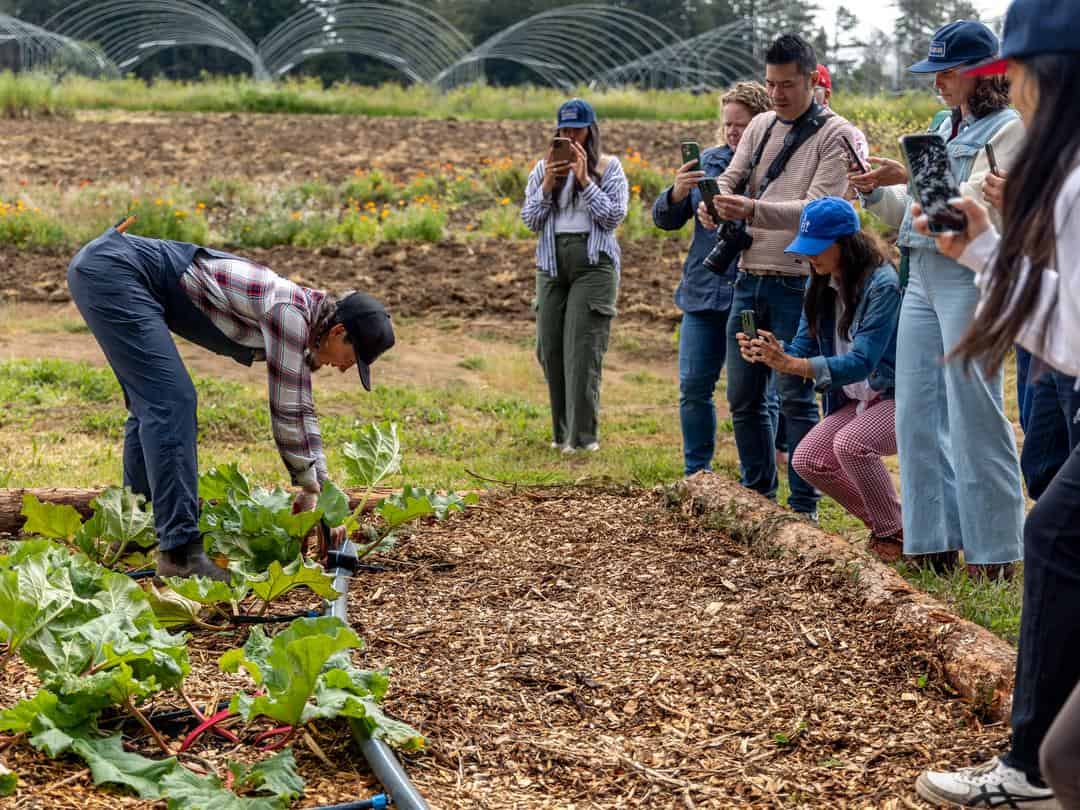

Where is the best place to find California Grown rhubarb?
Check your local grocer or farmers market for California Grown rhubarb! You’re most likely to find rhubarb in stores during April and May, but lucky shoppers could get their hands on the tart stalks anytime from March through July.
Note: Because of our warmer climate, California doesn’t grow quite as much rhubarb as some of our neighbors to the north. So if you’re looking for CA GROWN rhubarb, be sure to look specifically for California instead of just the country of origin.
How to store rhubarb:
Once you’ve purchased CA GROWN rhubarb, remember to store it in the fridge or freezer. Properly stored in the refrigerator, fresh rhubarb can last up to two weeks in the refrigerator. Rhubarb also freezes beautifully. When cut into one-inch pieces and stored in an airtight container, you can enjoy the sweet flavor of rhubarb for up to a year!
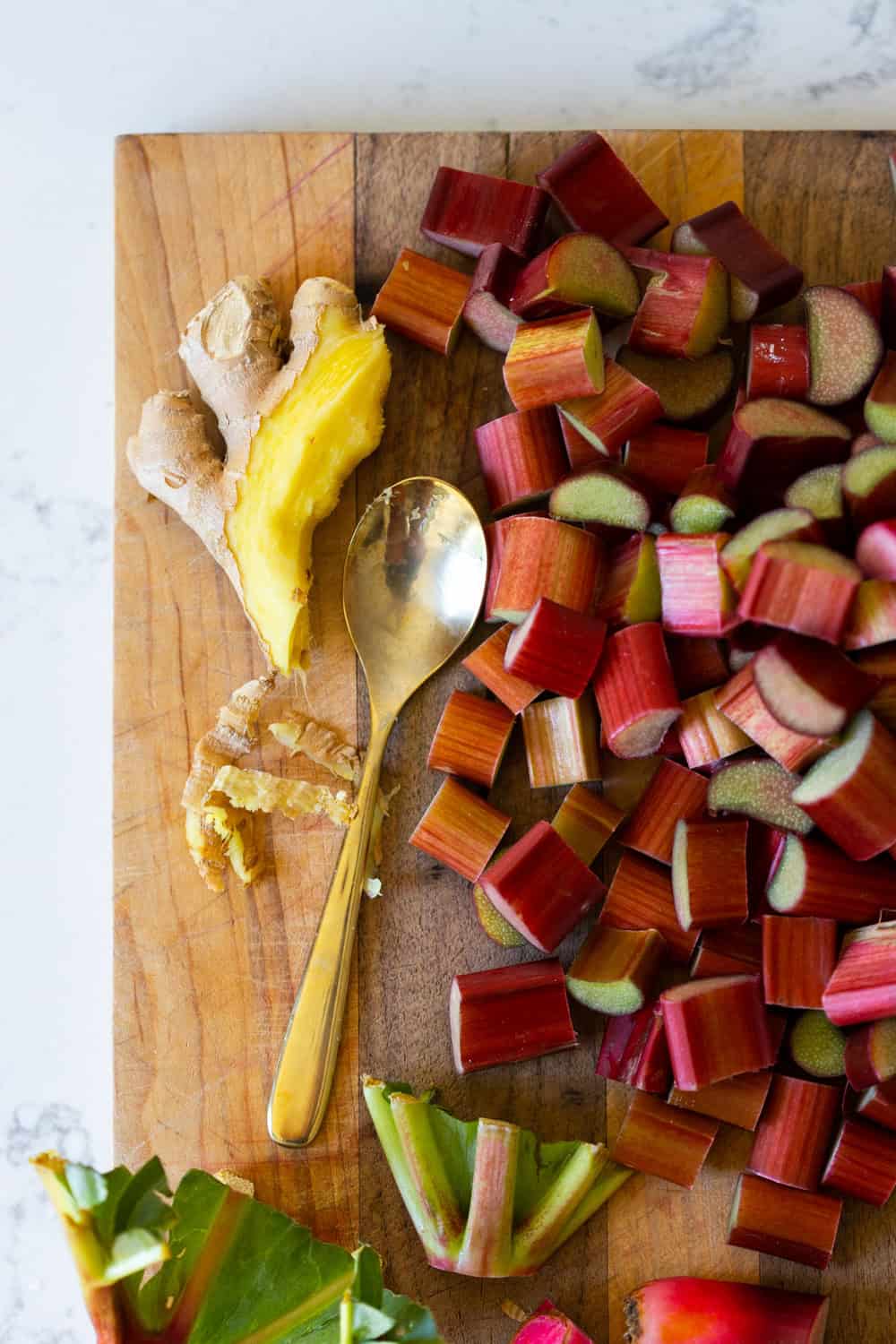
What’s the best way to prepare rhubarb?
Fresh from the farm, rhubarb looks a little like a brightly-hued celery. So, it makes sense that the initialintial prep is pretty similar. Start by trimming the stalk on both ends. Then, you’ll want to cut out any bruised or woody parts. If it’s a larger stalk, remove any strings.
Rhubarb can be used in both sweet and savory recipes. In sweeter preparations, it’s generally cooked down with a little water and sugar and then either mashed or blended. For savory preparations, it can be used thinly sliced in salads or roasted.
Check out a few of our favorite rhubarb recipes from CA GROWN Creators!
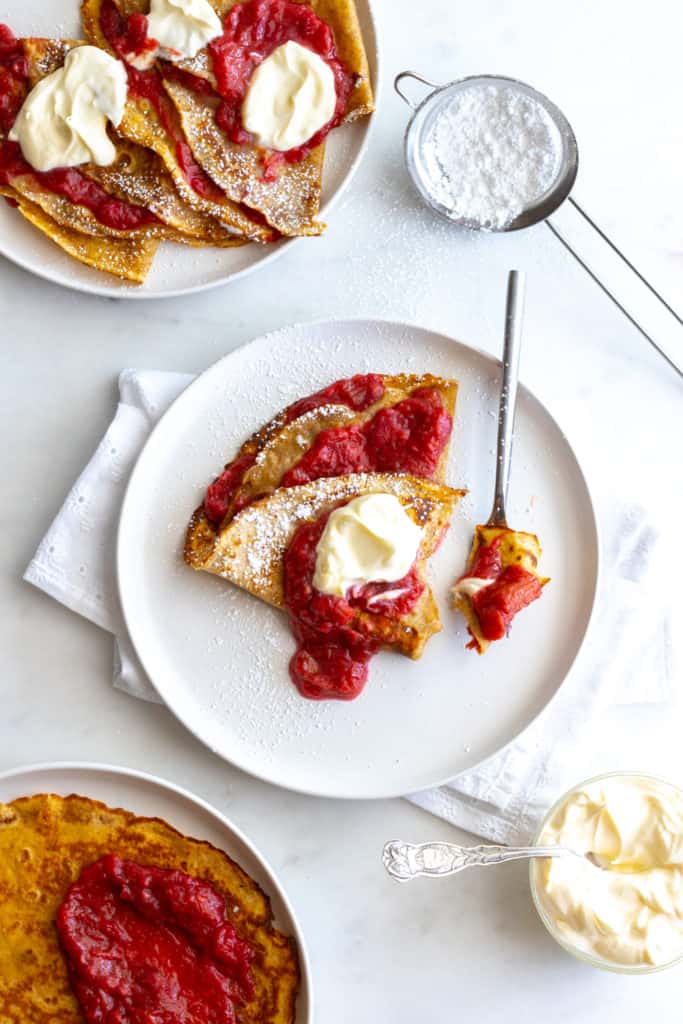
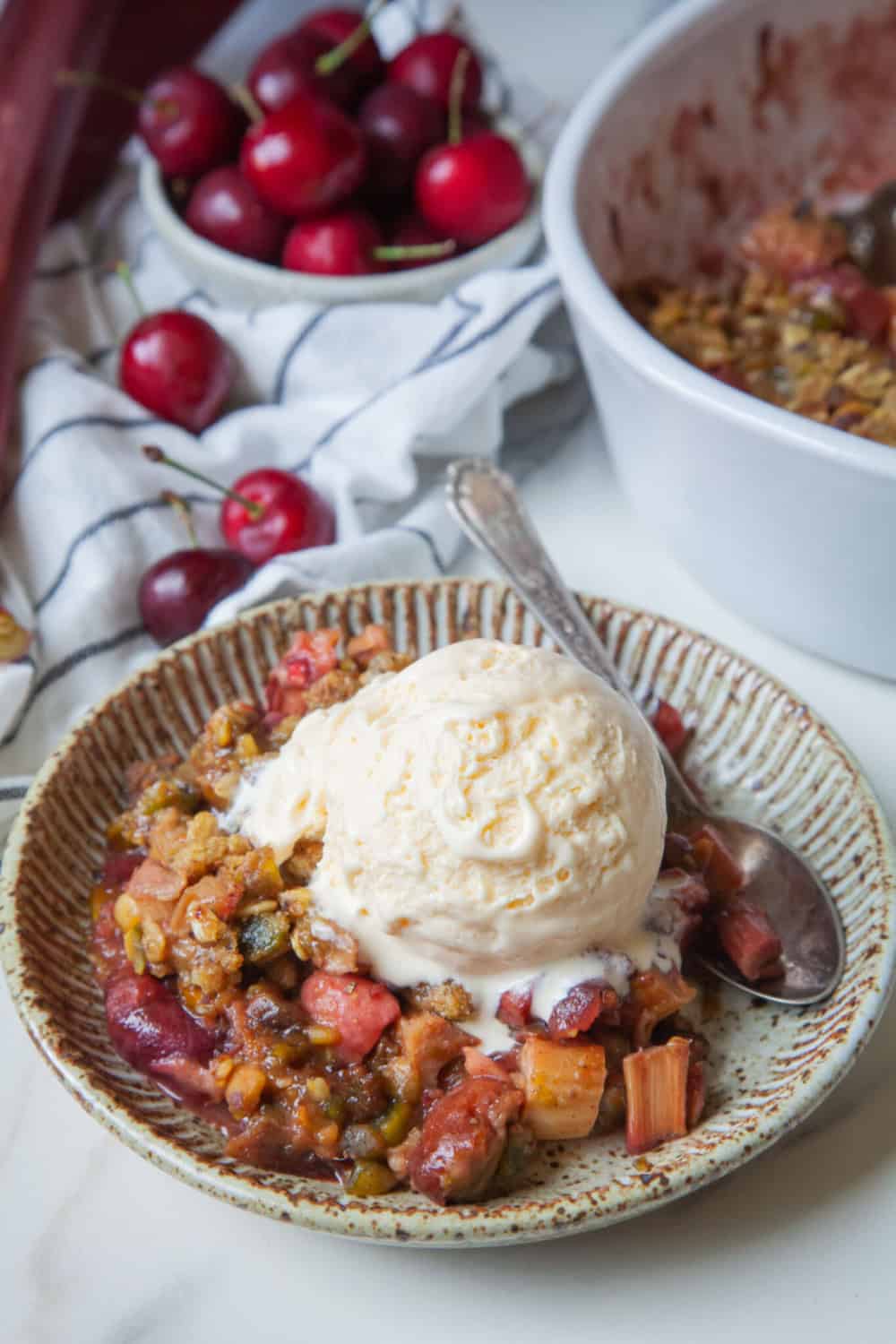

Article by Hilary Rance. Photography by Hilary Rance, James Collier and Becky Sue Wilberding.
